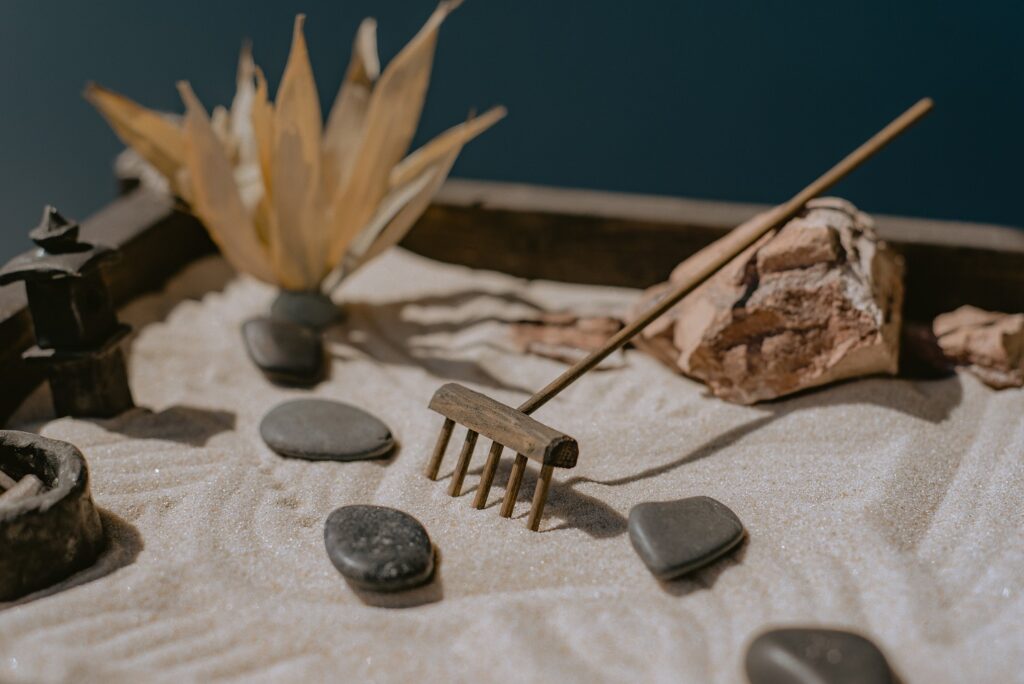Embracing Serenity: The Path to Consistent Meditation for Today’s Youth

Photo by Roman Odintsov at Pexels
In the fast-paced world we live in, finding peace and tranquility seems like an elusive goal. Young people, in particular, face numerous distractions and constant stimulation that make it difficult to quiet the mind and find inner calm. However, meditation can be the key to reclaiming serenity amidst the chaos. This article aims to guide today’s youth on a journey of consistent meditation, helping them develop a lifelong practice that resonates with their unique experiences and desires.
The Importance of Meditation
Meditation is more than just a trendy buzzword or an ancient practice confined to spiritual realms; it is a practical tool that holds the power to transform our lives. In a world dominated by constant distractions and a relentless barrage of information, meditation offers a sanctuary where we can reconnect with our inner selves and find solace amidst the chaos. By dedicating time to stillness and introspection, we unlock a multitude of benefits that resonate deeply with today’s youth.
One of the primary benefits of meditation is improved focus. In a society where multitasking has become the norm, our attention is constantly pulled in a dozen different directions. The practice of meditation allows us to train our minds to stay present and focused on the task at hand. By bringing our attention to the breath or a chosen focal point, we learn to navigate through the maze of distractions with greater clarity and concentration. As young people juggle academic responsibilities, extracurricular activities, and social engagements, cultivating the ability to sustain focus becomes an invaluable asset.
Moreover, meditation is a powerful tool for promoting emotional well-being. The pressures and challenges faced by today’s youth can often lead to stress, anxiety, and a sense of overwhelm. Meditation acts as a refuge, providing a space where we can acknowledge and process these emotions in a non-judgmental and compassionate manner. By observing our thoughts and feelings without getting entangled in them, we gain a newfound sense of emotional resilience and balance. Regular meditation practice can help young individuals develop healthier coping mechanisms, manage stress more effectively, and experience a greater sense of inner calm.
In addition to improved focus and emotional well-being, meditation nurtures enhanced self-awareness. In a world that constantly bombards us with external influences and societal expectations, it is easy to lose sight of our true selves. Meditation offers a sacred pause—a chance to peel back the layers and delve into our core essence. By turning our attention inward, we begin to unravel the intricacies of our thoughts, emotions, and beliefs. This self-exploration leads to a deeper understanding of our values, passions, and aspirations. With this heightened self-awareness, young people can make choices aligned with their authentic selves, fostering a sense of purpose and fulfillment.
Understanding the profound significance of meditation provides a solid foundation for committing to a regular practice. When we recognize that meditation is not merely an esoteric practice but a practical and transformative tool, we are more likely to embrace it as an integral part of our lives. By exploring the multifaceted benefits of improved focus, emotional well-being, and enhanced self-awareness, young individuals can embark on a journey of self-discovery and personal growth through consistent meditation. So, let us venture forth, with an open mind and a willingness to embrace the potential that lies within, as we embark on the path of meditation.
Creating the Ideal Meditation Space
Creating the perfect environment for meditation is paramount, particularly for young people who often find themselves surrounded by distractions. In this section, we will delve into the significance of crafting a serene and inviting space that nurtures deep introspection. Finding a quiet corner to retreat to is essential, as it provides a physical and mental sanctuary away from the clamor of daily life. Seek out a space where external noise is minimized, allowing you to immerse yourself fully in the practice.
Soft lighting plays a pivotal role in setting the mood for meditation. Consider using gentle, diffused lighting or the warm glow of candles to create a soothing ambiance. Soft, flickering light not only relaxes the eyes but also helps to cultivate a sense of calm and tranquility within. Experiment with different lighting options until you find what resonates with you and fosters a peaceful atmosphere.
Incorporating elements of nature can elevate your meditation space to a whole new level. Surround yourself with plants, flowers, or even a small indoor fountain. These natural elements not only add aesthetic appeal but also bring a touch of vitality and serenity to the environment. As you engage in your meditation practice, allow your gaze to rest upon the vibrant greenery or be mesmerized by the gentle flow of water, grounding yourself in the beauty of nature.
Aromatherapy can also enhance the meditation experience by engaging the sense of smell. Consider using essential oils, such as lavender, frankincense, or sandalwood, known for their calming and grounding properties. A few drops on a diffuser or a scented candle can infuse the space with a delicate fragrance that promotes relaxation and deepens the meditative state. Explore different scents and find the ones that resonate with you, creating a sensorial journey that complements your inner exploration.
Personalizing your meditation space is an essential aspect of making it truly your own. Surround yourself with objects that hold personal significance, whether it be photographs of loved ones, inspiring quotes, or meaningful artifacts. These items act as reminders of your intentions and aspirations, infusing the space with a sense of purpose and connection. The more comfortable and familiar the environment feels, the easier it will be to establish a regular meditation routine.
By curating an environment that appeals to the senses and promotes relaxation, young individuals can establish a sanctuary for their meditation practice. It is within this sacred space that they can disconnect from the outside world, reconnect with their inner selves, and embark on a journey of self-discovery and growth. Remember, the environment you create should reflect your unique tastes and preferences. Experiment, explore, and trust your intuition as you design a meditation space that resonates deeply with your soul.
Finding Your Meditation Style
Meditation is a profound journey of self-discovery, and discovering a style that aligns with your unique individuality and preferences is crucial. In this section, we embark on an exploration of diverse meditation techniques, empowering young people to find the approach that resonates deeply with their essence. Mindfulness meditation, a widely practiced style, invites us to be fully present, observing our thoughts and sensations without judgment. By cultivating awareness in the present moment, this technique enhances our ability to navigate life’s challenges with clarity and equanimity.
Another style worth exploring is loving-kindness meditation, which focuses on cultivating compassion and empathy towards oneself and others. Through the repetition of heartfelt phrases and visualization, this practice nurtures a profound sense of connection and kindness. By embracing loving-kindness, young individuals can foster greater emotional well-being, develop harmonious relationships, and spread positivity in their lives and the world.
Guided visualization, another powerful technique, invites us to tap into the creative power of our imagination. Through guided imagery, we embark on vivid mental journeys that stimulate the senses and evoke emotions. This style can be particularly helpful for manifesting goals, reducing stress, and enhancing relaxation. By immersing ourselves in the imaginative landscapes of our minds, we unleash our innate potential and connect with the depths of our subconscious.
Transcendental meditation, a practice rooted in ancient traditions, encourages us to access deeper levels of consciousness. With the help of a personal mantra, we effortlessly dive into a state of deep relaxation and profound stillness. This technique allows young individuals to experience a sense of transcendence, connecting with their innermost selves and accessing profound levels of peace and clarity.
As we explore these various meditation styles, it is important to remember that each individual’s journey is unique. Encouraging young people to experiment and find what resonates with them is paramount. The beauty of meditation lies in its adaptability to suit diverse personalities and preferences. Whether through formal classes, online resources, or meditation apps, there is a wealth of tools available to support and enhance your practice. From guided meditations to timer apps and educational resources, these tools can provide structure, inspiration, and guidance along the path.
By offering an overview of these different meditation styles and highlighting the resources available, we aim to empower young individuals to embark on a journey of exploration and self-discovery. Find the style that ignites a spark within you, for it is through this authentic connection that meditation becomes a transformative force in your life. Be open to the vast array of techniques, allow your curiosity to guide you, and trust that the right practice will unfold before you.
Overcoming Common Challenges
Maintaining a consistent meditation practice can be a real challenge, particularly for young people who lead fast-paced and hectic lives. In this section, we will delve into common hurdles that arise during the journey of meditation and provide practical solutions to overcome them. By addressing these obstacles head-on and offering guidance, we aim to empower young individuals to navigate the challenges and stay committed to their meditation practice.
One of the most common challenges faced during meditation is dealing with a wandering mind. As you sit in stillness, it’s natural for thoughts to arise and distract you from your focus. It’s important to remember that the goal of meditation is not to completely silence the mind but to cultivate a gentle awareness and detachment from thoughts. When you notice your mind drifting, gently bring your attention back to your breath or chosen focal point. Practice self-compassion and embrace each moment as an opportunity to return to the present. Over time, with patience and persistence, you will find it easier to maintain focus and experience moments of inner stillness.
Impatience is another hurdle that often arises, particularly in a society that thrives on instant gratification. It’s important to remember that meditation is a practice that unfolds gradually. Just like any skill, it requires time and patience to develop. Instead of getting frustrated by the perceived lack of progress, cultivate an attitude of curiosity and non-judgment. Embrace each session as an opportunity for growth and self-exploration. Trust in the process, and with consistent effort, you will begin to notice subtle shifts in your mental and emotional well-being.
Finding time in a hectic schedule is a common challenge for young individuals. It’s easy to feel overwhelmed by the demands of school, work, social commitments, and various other responsibilities. However, even a few minutes of daily meditation can make a significant difference. Start by setting realistic goals, such as dedicating five or ten minutes each day to your practice. Find pockets of time in your schedule that you can carve out for meditation, whether it’s in the morning before the day begins, during a lunch break, or in the evening before bed. Prioritize your well-being and make meditation a non-negotiable part of your routine. You’ll soon discover that creating this sacred space for yourself actually enhances your productivity and overall sense of balance.
Managing expectations is another crucial aspect of maintaining a consistent meditation practice. It’s important to approach meditation with an open mind and without placing undue pressure on yourself. Understand that each meditation session is unique and that experiences may vary from day to day. Let go of any preconceived notions of what meditation should look or feel like. Remember, there is no right or wrong way to meditate. Allow yourself to simply be present and observe what unfolds without attachment or judgment. Embrace the process of exploration and self-discovery, knowing that every moment spent in stillness is a step towards greater self-awareness and inner peace.
Maintaining a consistent meditation practice requires acknowledging and overcoming common obstacles. By understanding that a wandering mind, impatience, time constraints, and expectations are normal challenges, young individuals can navigate through them more effectively. By adopting a compassionate and patient attitude towards oneself, it becomes easier to stay committed to the practice. Remember that meditation is a lifelong journey, and with dedication and perseverance, its profound benefits can unfold in your life. Embrace the challenges as opportunities for growth, and let the transformative power of meditation unfold in your life, bringing forth greater peace, clarity, and well-being.
Integrating Meditation into Daily Life
To truly make meditation a consistent habit, it is essential to seamlessly integrate it into our daily lives. In this final section, we will explore practical strategies specifically designed for young people to effortlessly weave meditation into their routines. By emphasizing the integration of meditation into various aspects of life, we encourage a holistic approach that fosters a deep sense of well-being.
Morning and evening rituals provide wonderful opportunities to incorporate meditation into your daily routine. Begin your day with a few moments of stillness as soon as you wake up. Take a few deep breaths, set an intention for the day ahead, and allow yourself to ease into the present moment. This gentle start can create a positive and centered mindset that sets the tone for the entire day.
In the evening, create a calming wind-down routine to prepare your mind and body for a restful night’s sleep. Engage in a short meditation before bedtime, allowing yourself to release any lingering tension or stress from the day. This practice can help promote relaxation, improve sleep quality, and cultivate a sense of inner peace. Experiment with different techniques, such as body scan meditation or guided relaxation, to find what resonates with you and supports a restorative night’s rest.
In addition to dedicated meditation sessions, integrating mindfulness into everyday activities is a powerful way to cultivate a present-moment awareness. Mindful eating, for example, involves savoring each bite, paying attention to the textures, flavors, and smells of the food. Engaging in mindful walking allows you to be fully present, noticing the sensations of each step and the environment around you. By bringing mindfulness to ordinary tasks like brushing your teeth or washing dishes, you infuse these moments with a sense of mindfulness and presence. This integration expands the practice of meditation beyond designated sessions, making it a way of life.
Another effective strategy is to find opportunities for mini-meditations throughout the day. In a busy schedule, it can be challenging to carve out large chunks of time for meditation. However, even brief moments of mindfulness can have a profound impact. Take a few mindful breaths during transitions between activities, waiting in line, or before a stressful situation. These mini-meditations serve as anchors, allowing you to pause, recalibrate, and bring yourself back to the present moment. By incorporating these short moments of mindfulness throughout the day, you nurture a continuous state of awareness and inner calm.
Moreover, technology can be harnessed as a supportive tool for integrating meditation into daily life. There are numerous meditation apps available that offer guided meditations, timers, and reminders to support your practice. Explore different apps to find one that resonates with you, and utilize the features that align with your goals and preferences. These apps can serve as valuable companions, providing structure, inspiration, and guidance along your meditation journey.
To establish a consistent meditation habit, it is vital to seamlessly integrate it into daily life. Morning and evening rituals, mindfulness in everyday activities, and mini-meditations throughout the day all contribute to this holistic approach. By incorporating meditation into various aspects of life, you foster a continuous state of awareness, presence, and well-being. Embrace the power of integration, allowing meditation to become an effortless and transformative part of your daily routine. As you embark on this journey, remember that consistency and commitment are key. With time and dedication, meditation will weave its threads of peace, clarity, and resilience into the fabric of your life, guiding you towards a more centered and fulfilling existence.
In today’s fast-paced world, where distractions abound, meditation serves as a sanctuary of tranquility and self-reflection. By recognizing its significance, establishing a serene meditation space, discovering a personal style, surmounting obstacles, and seamlessly integrating it into daily routines, young individuals can cultivate a lifelong practice that nurtures inner peace and clarity. It is crucial to remember that meditation is a journey, and consistency is the foundation of its transformative power. Embrace the process with patience, kindness toward yourself, and an open heart, and allow the profound benefits of meditation to unfold, guiding you toward a life of serenity and fulfillment.




